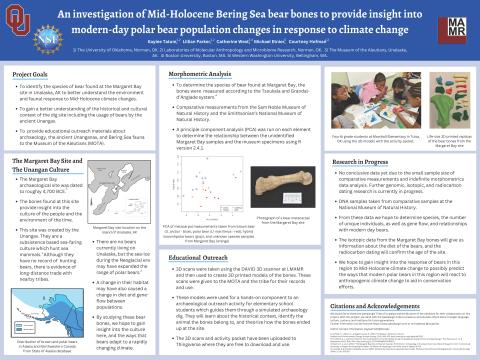An investigation of Mid-Holocene Bering Sea bear bones to provide insight into modern-day polar bear population changes in response to climate change
This project is an investigation of ancient Bering Sea bear bones from the Margaret Bay archaeological site on Unalaska. Our goal is to provide cultural and morphological data for use in educational outreach and modern polar bear conservation. We used ethnographic methods to understand the cultural context of the Margaret Bay site and history of the Unangan peoples, their trade with nearby tribes, and traditional resource usage. We took comparative linear morphometrics from museum specimens to determine the species of origin through principal component analysis (PCA). We also created 3D printed models which provide a hands-on supplement to an archaeology activity that we designed for elementary school students. These materials were returned to the tribe and the Museum of the Aleutians for their use. The results of the morphometric analyses were not conclusive, and the bear species is still unknown; genetic research is currently underway to determine whether the bones are polar or brown bears, the number of unique individuals, and their relationships to modern-day bears. Based on future results, we hope to understand how neoglacial bear populations adapted to climate change to predict how modern arctic bears may adapt to anthropogenic climate change. This will also give information about how the Unangax gathered resources during times of scarcity.
